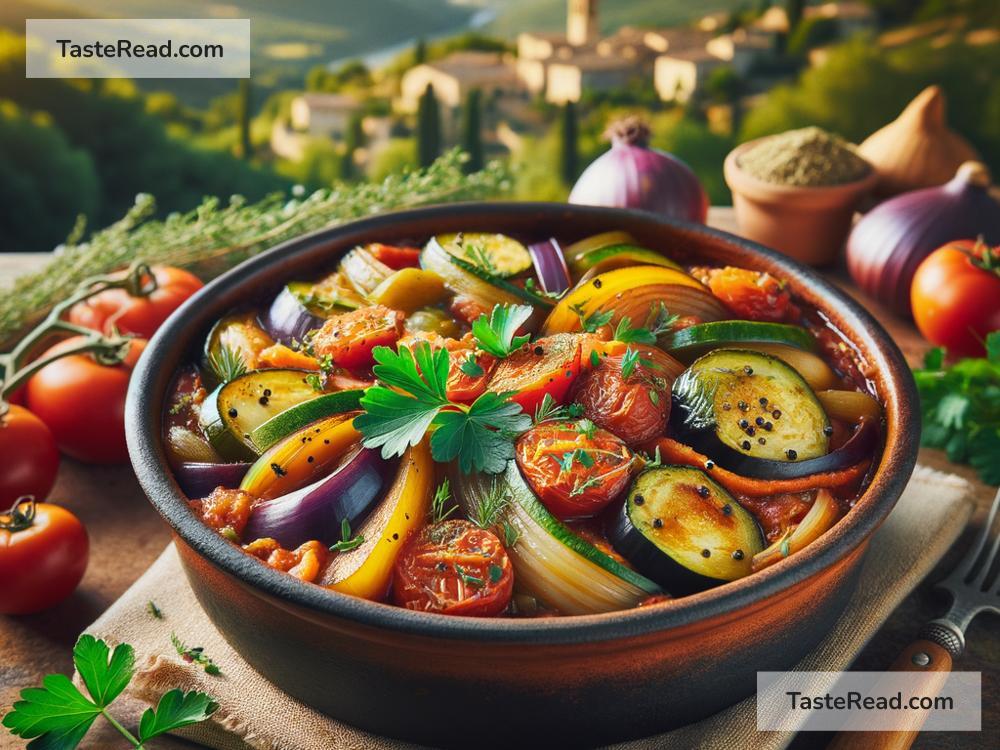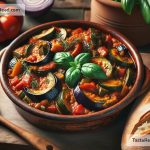How the French Ratatouille Became a Cultural Symbol of Provence
In the sun-drenched lands of the Provence region in France, a simple yet hearty dish has risen to iconic status. Ratatouille, a stewed vegetable medley, has become more than just a traditional Provençal dish; it’s a cultural symbol that embodies the spirit, history, and the vibrant produce of the area. But how did this humble dish, made with everyday ingredients like eggplant, zucchini, and tomatoes, become such a significant part of Provençal identity?
A Dish Born from Simplicity
Ratatouille’s roots are firmly planted in the heart of Provence’s culinary traditions, which are all about making the most of what the local land and climate have to offer. The ingredients in ratatouille are a testament to this: ripe tomatoes, fragrant bell peppers, zesty onions, tender zucchini, and earthy eggplants. These vegetables thrive under the Provençal sun, and together, they create a dish that’s vibrant, both in taste and appearance.
Originally, ratatouille was food for the poor farmers. They would gather whatever vegetables were readily available in their gardens, cook them slowly together, and enjoy a nutritious meal that could feed their families. The simplicity of its ingredients and the ease of preparation made ratatouille accessible to everyone, adding to its popularity and widespread adoption over the years.
Cultural Significance and Pride
As ratatouille’s fame spread, it became more than just a meal; it became a symbol of Provençal culture and pride. The dish reflects the region’s agricultural richness and showcases local produce at its best. Each bite tells a story of traditional farming techniques, sustainable living, and a deep respect for the land. Through ratatouille, people celebrate the bounty that Provence has to offer.
Moreover, the preparation of ratatouille is almost like a ritual. It’s a process that fosters togetherness and the passing down of cooking traditions from one generation to the next. Families and friends gather to share in the creation of the dish, each contributing their knowledge and personal touch. This communal aspect has made ratatouille a symbol of Provençal hospitality and warmth.
A Dish That Crossed Borders
While ratatouille remains a proud emblem of Provence, its appeal has crossed regional and national borders, finding fans across the globe. Its international fame grew, especially after the release of Pixar’s beloved film “Ratatouille,” which introduced the dish to an even wider audience, many of whom were eager to taste and learn about this piece of Provençal culture.
Chefs around the world have embraced ratatouille, experimenting with the recipe and incorporating it into their menus. This global recognition has not only cemented ratatouille’s status as a culinary delight but has also sparked interest in Provençal culture, traditions, and, of course, its exceptional cuisine.
Conclusion: More Than Just a Dish
Ultimately, ratatouille stands as a testament to the beauty of simple, honest cooking. It’s a celebration of nature’s gifts, a connector of people, and an enduring symbol of a region rich in history and tradition. Every simmering pot of ratatouille is a homage to Provence, inviting those who taste it to experience the warmth, the colors, and the flavors of this enchanting part of France.
In the end, ratatouille is more than just a dish. It’s a reflection of the Provençal spirit: resilient, vibrant, and wonderfully inclusive. By embracing the simplicity and beauty of its local produce, Provence has given the world a culinary treasure that continues to inspire and bring people together, one flavorful bite at a time.


